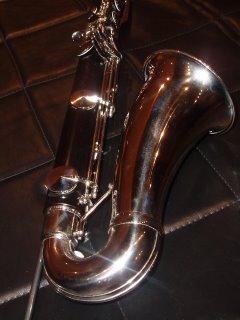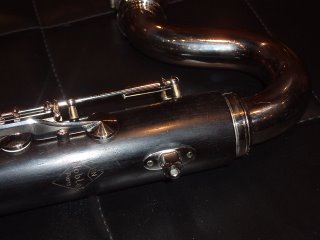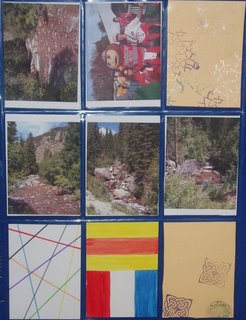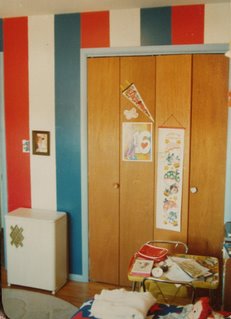Here are some artsy photos of my newly refurbished bass clarinet. It had all of the hardware removed, polished, fixed up. It's so smooooth.
The wood was soaked in oil for three days (sounds like a spa). It was fitted with all-new white leather pads (which were back-ordered, giving my technician fits).

This is my favorite photo, and much like my favorite photo from back in my college days. It has a redder cast to the shot. When I took it, I expected my other bell shot (not seen here) to be the better shot. Sometimes you just can't tell until you see it big.
We had a band concert last night at Local College. It went well. Our only big excitement was that the conductor's uncle passed away mid-week. He and his family attended the funeral, then on the day of the concert, the conductor and family woke at 4:30am in Pennsylvania to make it back in time for the concert. Whew.
All five of our pieces were new to the band. We played:
- "Ride" by Samuel R. Hazo
- "Elegy and Affirmation" by Jack Stamp
- "Tempered Steel" by Charles Rochester Young
- "Thanksgiving" (Movement 3 of Symphony of Prayer) by J. Eric Schmidt
- "Burlesque" based on themes from Symphony No. 9, First Movement by Dimitri Shostakovich.

It was described as our sit-down marching band concert, because of all the sound and energy we put out. Tempered Steel has a prominent, recurring bass line with some tricky fingerings. The bass clarinets also have an ethereal section that used a handful of note in arpeggios, but there isn't much of a pattern; we had to read every measure. There was no repetitious groove. It sounded appropriate for Halloween, or like something from Michael Daugherty.
The conductor described the Burlesque to us during one of the first rehearsals and we laughed so much, we insisted that he share the story with the audience at the concert. Shostakovich was supposed to be the great Russian Symphony Composer, outshining Beethoven. His works vacillate between pleasing the Russian State and thumbing his nose at them. This ninth symphony was expected to be majestic, greater than Ode to Joy, but instead it opens with trills that sound like raspberries.

Thanksgiving was an easy piece for most. We called it the Cowboy Thanksgiving, because of its hoedown feel. We practically played it twice. After 107 measures, we go back to the beginning, replay 106 measures, then jump to the coda of only 5 more measures to wrap it up. I suppose that helps pad it out to 5' 30".
The Elegy and Affirmation was to honor both the recently retired band director who dies of a heart attack and also a recent Local College graduate and current high school band director who died in a car accident last spring.

Coming up next month are more familiar pieces - warhorses? We'll start "Chester" by William Schumann and "Russian Christmas Music" by Alfred Reed. I have played both of them before and will enjoy playing them again.



 I made a jewelry tray for my dresser. The cats started as foam stamps. I stamped them with water and traced the images in pencil. The pencil markings will vanish during the final firing.
I made a jewelry tray for my dresser. The cats started as foam stamps. I stamped them with water and traced the images in pencil. The pencil markings will vanish during the final firing.















